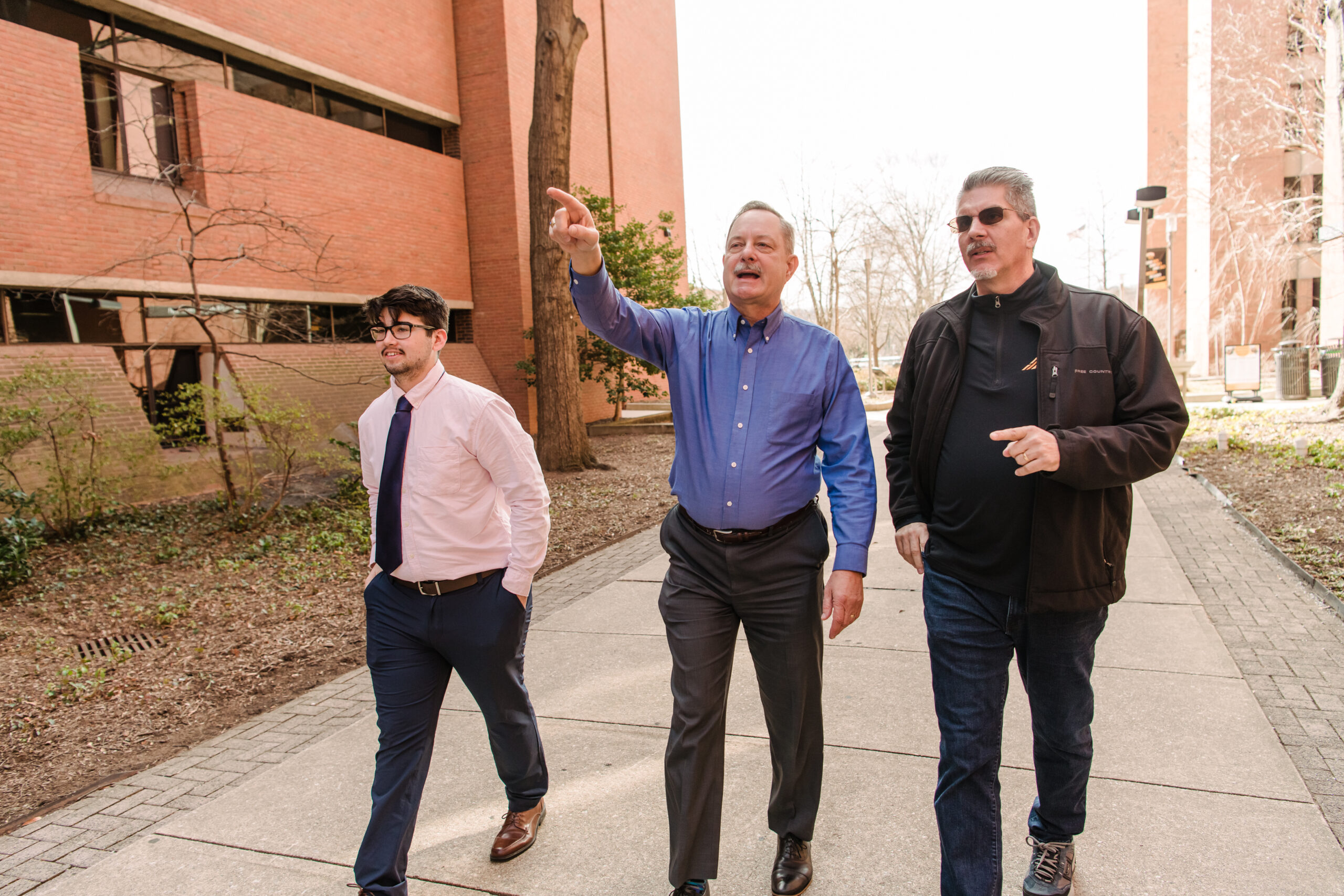In the 1960s, a common routine for elementary school students was to practice hiding under their desks in case of a nuclear blast. Following the Bay of Pigs standoff in 1961, international tensions remained high as the United States and the Soviet Union continued advancing their nuclear weapons. But global armament was only a minor inconvenience to Stanley Czajkowski in those days. As a third grader in Miss Hamill’s class, he was busy falling in love with the riddle of math.
Unbeknownst to this future Retriever was how he would eventually use those foundational mathematical skills to develop algorithms designed to protect presidential communications in case of a nuclear threat.
Czajkowski, who is nearing retirement after more than four decades of service to this project and other issues of national security, is leaving the mission in good hands. Among the experts on his team are several other UMBC alumni—working side by side to ensure the success of nuclear deterrence.
Accounting for all the probabilities
Knowing what he would do with math only came after Czajkowski earned two sequential degrees in the subject at UMBC. Immediately following his bachelor’s in 1976, Czajkowski completed his master’s in mathematics in 1977, focusing on probability and statistics. He discovered the Johns Hopkins Applied Physics Laboratory (APL) headquartered in Laurel, Maryland, at a career fair on campus, interviewed for a position, and has been working for the research division of Johns Hopkins for the past 45 years.
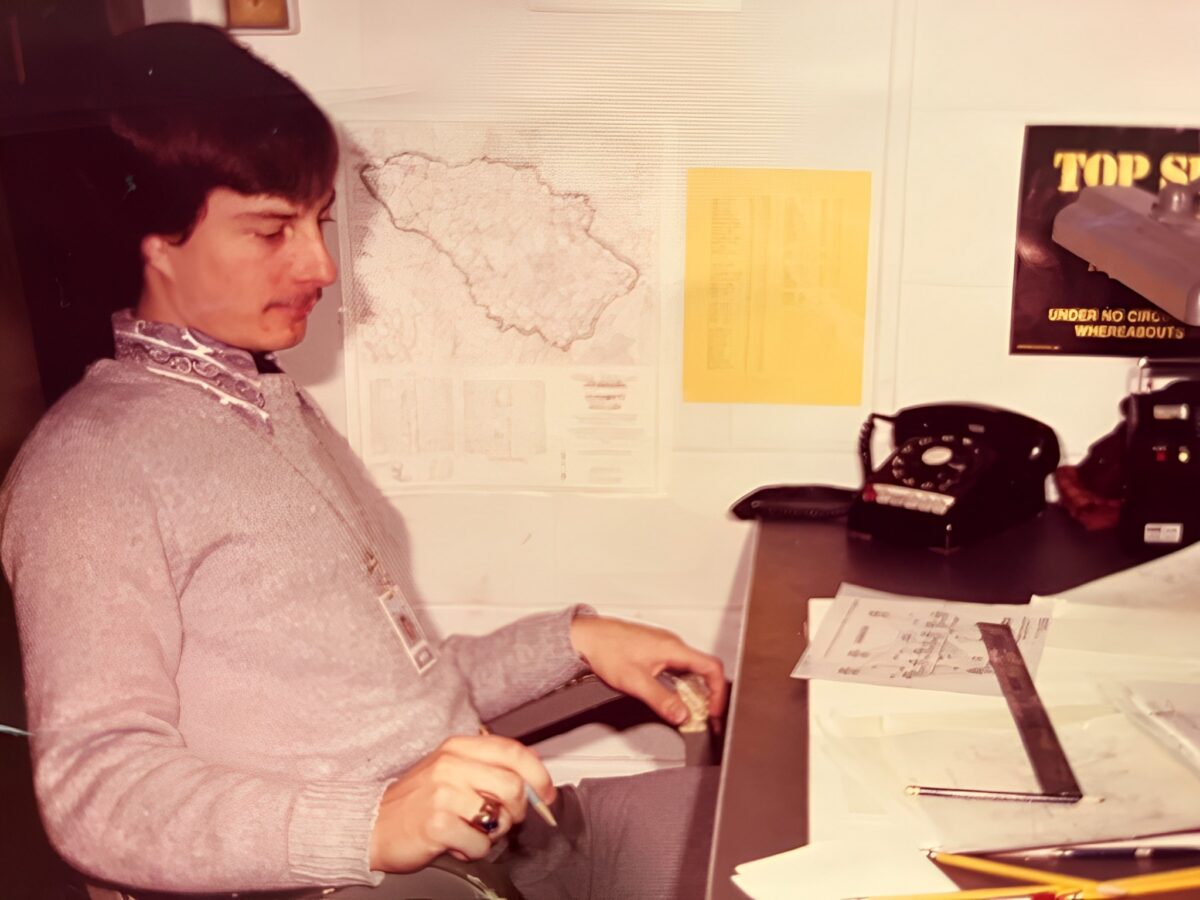
Early on at APL (where more than 350 Retrievers work currently), Czajkowski got to see the real world impact of his work when tasked by the Navy to develop the mathematical methodology used to determine how many new aircraft to buy for a specific mission. Sixteen was the answer. “And those aircraft have been in operation for 30-plus years, doing an important mission,” says Czajkowski. “It gave me great satisfaction that, even at that young age, I had an impact on national security and when they put it all together, it was probably over a billion dollars at the time, for purchase.”
But this would not be the defining calculation of Czajkowski’s career. Among the many projects tasked with in the intervening decades, Czajkowski’s main efforts have focused on developing the mathematical models used to evaluate the communication systems that the president uses to command all the nuclear forces. “To assure that, under any circumstances, wherever the president is, in the White House, or on an airplane traveling, that he can communicate to the nuclear forces if needed,” says Czajkowski.
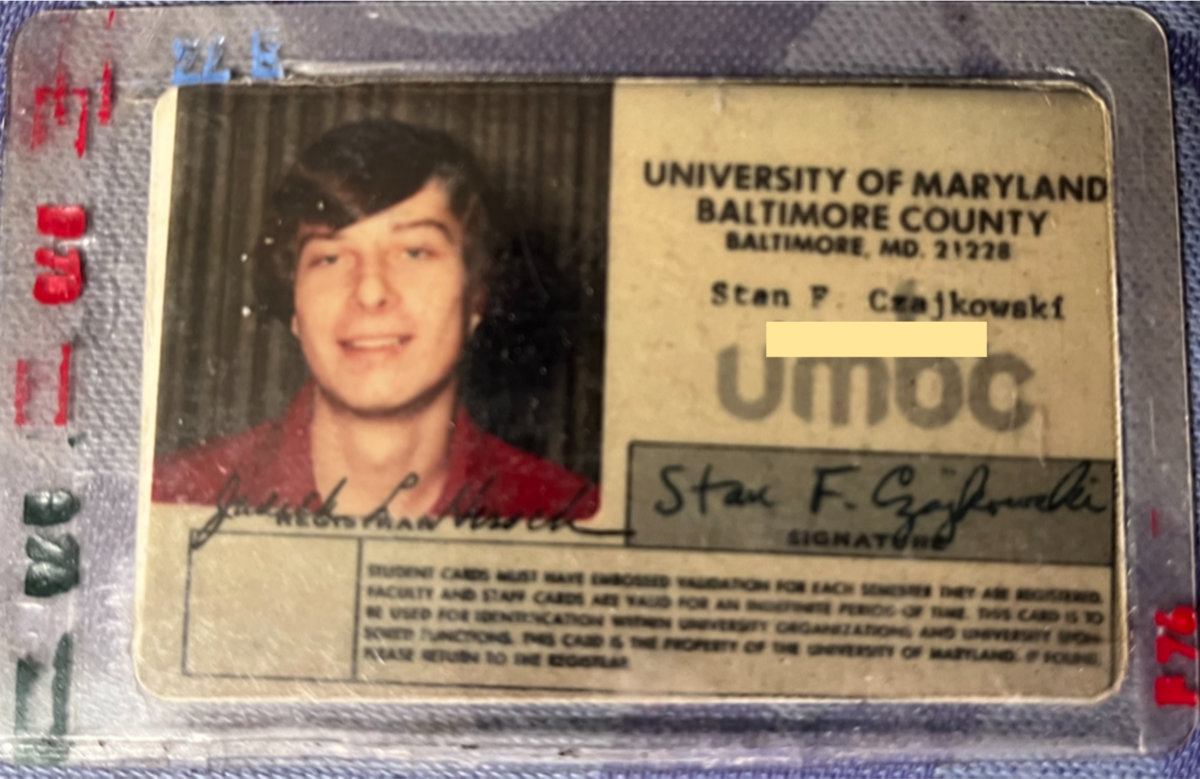
With a background in probability and statistics, Czajkowski’s job is to represent how well dedicated frequencies used for communications via aircraft, ships, or satellites will work in various situations. “The math comes in trying to figure out how well those communications will work in different environments,” explains Czajkowski. He gives an example of a submerged submarine, listening in on their antenna at a distant location. If you send information over the radio frequencies, how sure are you that it will be received?
“You have to account for all the probabilities of different random events, and we have data that goes into the model that you have to calculate statistics on in order to support that calculation.”
Early in Czajkowski’s career, he helped design the simulation model used to do just that—and it’s still being used by both the U.S. Navy and the Air Force. “It’s become the national standard for modeling that kind of communications to submarines, bombers, and intercontinental ballistic missiles,” he says.
Defense relies on teamwork
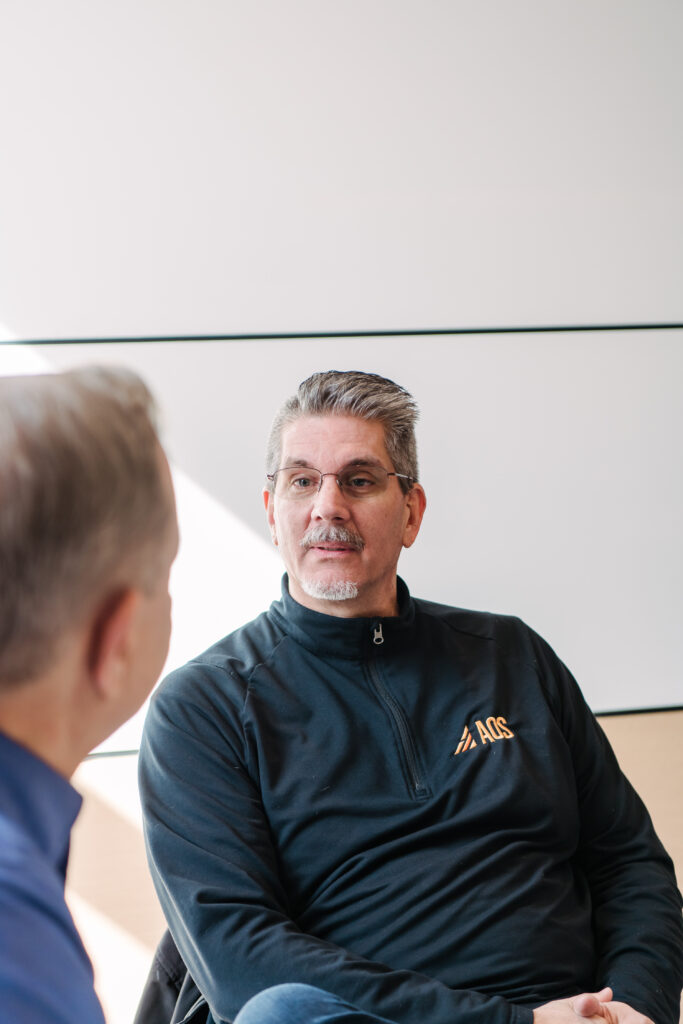
Czajkowski, who writes the algorithms and performs analysis for this project, is relieved not to be working alone. “I concentrate on the analytical side, the math and statistics stuff. But it’s pretty much a team effort in our group—we have mathematicians, computer scientists, electrical engineers, and physicists, all working together to solve the problems.”
Some of those key players are other Retrievers. Meet Jim Miller ’87, computer science, who is now the group supervisor of Czajkowski and other technical staff members of the Nuclear Command Communications Systems Group of the Asymmetric Operations Sector.
Miller has only been in this role for about a year and half, but has worked for APL for 28 years.
“Our group collects and analyzes data to ensure the readiness state of our nation’s nuclear triad of bombers, ICBMs [intercontinental ballistic missiles], and SSBNs [submarines],” explains Miller. “So when the president needs to communicate with the joint chiefs while some major national security event is happening, we know that they have a robust, resilient, and secure communications path with our nuclear triad to effectively carry out our mission. And that mission is not only nuclear. That mission can be related to natural disasters, like Hurricane Katrina, when the president needs to deploy forces to help with humanitarian aid.”
Grounded in leadership
Miller—whose son James Miller ’13 and daughter Christine Miller ’17 are also Retrievers with computer science degrees—sees the root of his success stemming from his early growth at UMBC. “UMBC allowed me to have that opportunity to make relationships and understand how important they were, rather than being a lemming or a drone, just rotely going to class and not getting a full experience out of college,” says Miller.
Those interpersonal skills have allowed him to take on increasingly larger leadership roles. “What I pride myself on today is building personal relationships with people, because each and every one of us has something to offer, and my job as the supervisor is to figure out what that is,” says Miller.
One of Miller’s newest team members is also a UMBC alumnus. Nick Sica ’22, computer science and history, started at APL just under a year ago. While his title is vaguely defined as “associate professional staff,” Sica says his main duties fall under software engineering, but also include data communications, data analysis, and cybersecurity.
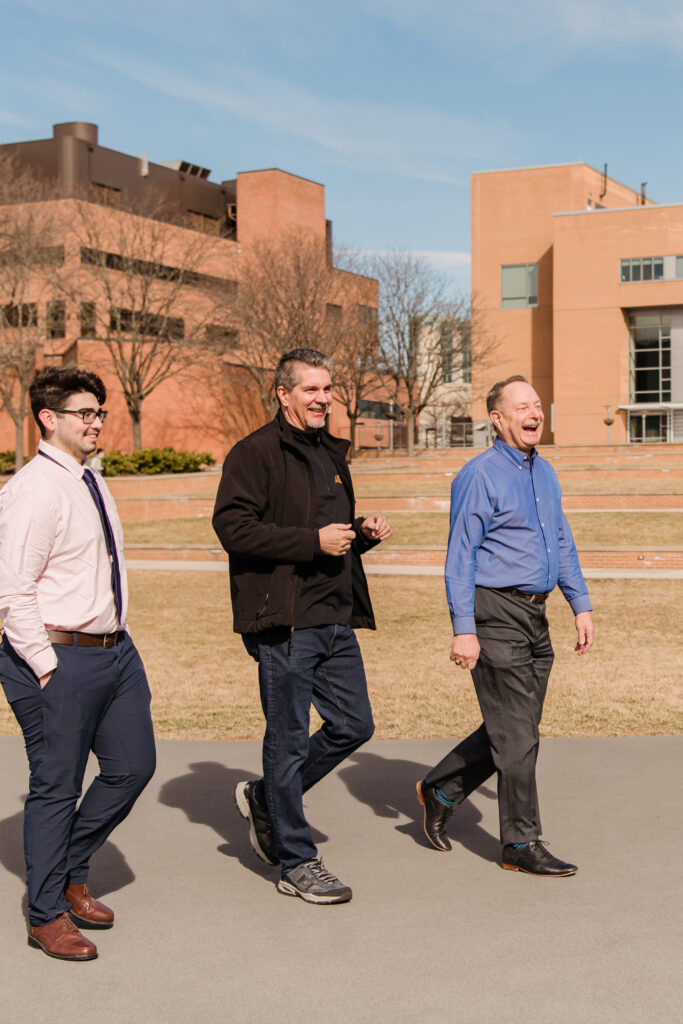
When Sica was interviewing at APL, he was asked his placement preference within the organization. His first choice was in NC3 (Nuclear Command, Control, and Communications) because of Miller. “It seemed he cared more about what I wanted to do in my position and what I was comfortable in doing and my growth, and less about just finding someone to cover the position,” said Sica. And since then, “he’s been making sure that I’ve transitioned well.”
As a recent graduate, many of the tasks require new skill sets for Sica, including work in computer and electrical engineering. But he knows just who to go to if he needs help, one of the longest serving leads on the team, Czajkowski.
Every Wednesday, in a team meeting, Sica sits down with Czajkowski and gets “his input on the progress that I’ve made on the task, as well as making sure that I understand the context of the situation and what we’re doing. This helps me create better code for the mission that we’re doing here.”
“Given the fact that I’ve been working in this area for so long,” says Czajkowski, “I’m looked at as a subject matter expert, so I often get consulted. This might involve getting together with team members on a particular project, discussing what the problems are, looking into, okay, ‘How do we move forward to solving this particular problem?’”
These algorithms support democracy
“Stan is my trusted advisor,” says Miller. “He was in my seat before. To see someone with 45 years experience still have that desire and dedication, it’s amazing.”
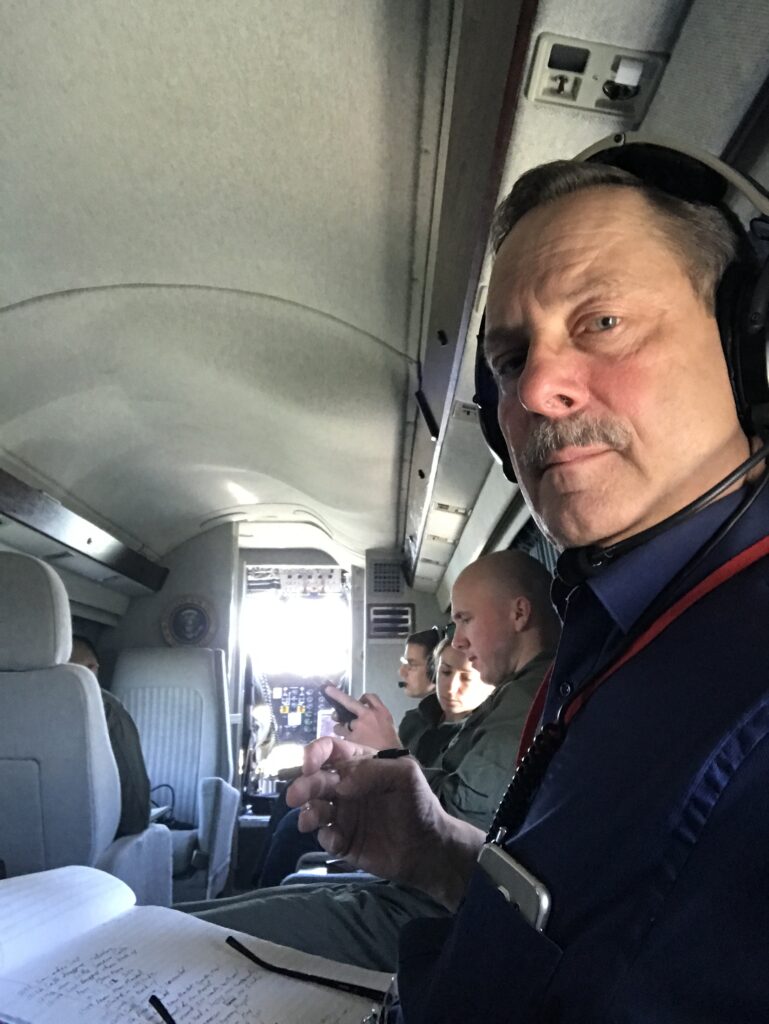
Czajkowski, who plans to partially retire this year, is more mindful than ever of the need to pass down his knowledge, as well as the weight of the mission his team is responsible for.
Miller compares his team’s project to his previous position working in the Air and Missile Defense Sector, which would publicly demonstrate U.S. interceptors intercepting a missile. “We would launch a test missile, and would have our Aegis destroyers track it, engage it, and destroy it. The events are filmed for analysis and also demonstrate to the world that we have a very impressive capability, and it’s very effective,” says Miller.
He points out that for nuclear capability, there’s no way to publicly display those ironclad defenses. “People just have our word that we are going to be able to respond. And so we back that up by ensuring that we can do that. But there’s no public display of that. So it’s harder for others to see the importance of what we do, but it’s absolutely critical.”
“We have preserved our democracy for all these years through nuclear deterrence,” continues Miller. “And Stan’s work is a testament to that.”
Vital work requires excellence
On an unseasonably warm winter day in February, Czajkowski, Miller, and Sica walk around UMBC’s campus together, at ease in their off-the-cuff camaraderie. Sica, who only graduated the year before, takes the lead on introducing his colleagues to an entirely new landscape in the loop. While peeking into some of the bright, state-of-the-art classrooms in the Interdisciplinary Life Sciences Building, Sica shares that he was in class here when UMBC announced the start of remote learning in early March 2020.
This leads to Miller’s memory of hearing of the 1986 Challenger disaster on the radio while on his commute to UMBC. The conversation moves on from dwelling on heavy topics. This visit is more of a field trip, a chance to take a break from the weightier aspects of their day-to-day mandate.
Czajkowski, a men’s basketball season ticket holder, looks around campus with a sense of wonder. It’s come a long way since his tenure in the 1970s, but then again, so has he. Most people will not stay with the same employer for their entire career, much less continue to solve problems in the same area, and yet, Czajkowski has found satisfaction doing exactly that.
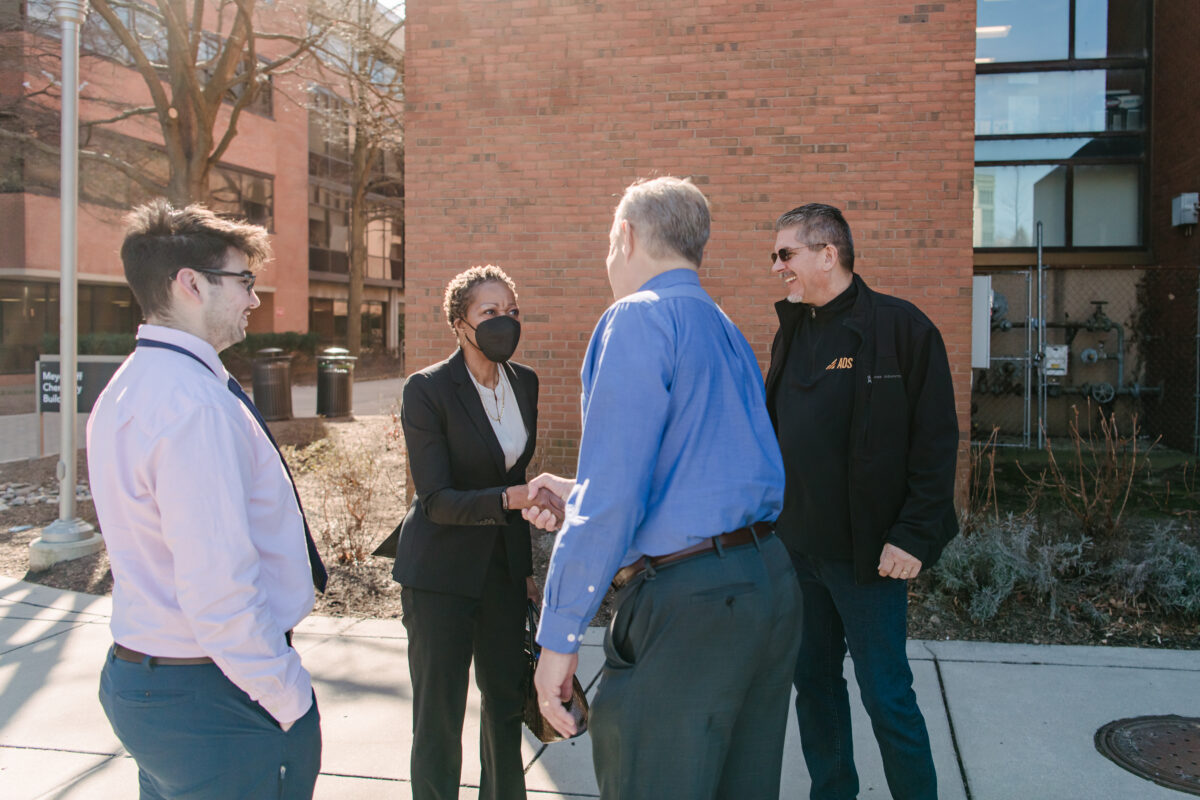
“We have a very important mission that we’re working on, and I’m passionate about making sure that it is done well,” says Czajkowski. “One of the things that I’d say that UMBC taught me was how to think logically in the mathematical world, and dig deep into problems, and to be able to say, ‘Look, here’s how you approach the problem that’s being presented to you, and figure out a way to get to a solution.’”
“And the focus that I’ve applied throughout my career is, be excellent in everything you do, and make sure you do everything the right way. That’s just me as a person. It just gives me great satisfaction to know that I’m applying myself the best I can, and not taking shortcuts. You don’t want to be wrong in this world.”
Tags: CNMS, COEIT, Computer science, Mathematics, Spring 2023

